News
Let’s save our wild elephants
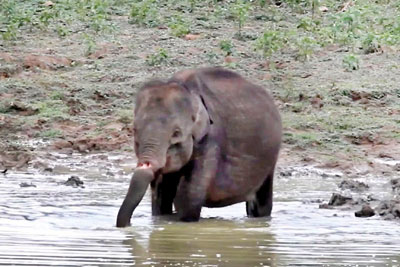
The agony of the innocents: Trunk severed by a snare (above) jaw blasted by hakka-patas (above) and starving to death after an elephant drive (bottom) -Photos courtesy of CCR
Tiny babies in crisis — searing, heartbreaking, stark and haunting images that will never be forgotten, words being inadequate to describe them fully.
As the images captured from different parts of the country stilled all activity in a room of the Sri Lanka Foundation Institute in Colombo 7 on Tuesday, the disturbing thought that rushed through many a mind was that the babies may already be dead.
No doubt, while their lives would be traumatic and torturous, their deaths would be agonising.
Sri Lanka just does not need any more prodding to bring out a policy that will be fair to all. Just those images would suffice.
One baby’s trunk has been cut, when it got caught in a snare. However earnestly the little one tries to take water which is a basic necessity, it simply trickles out.
The second baby has bitten a hakka-patas (jaw-bomb) shattering its jaw. No food and water for it too, while starvation and a terrible death await round the corner.
The third baby’s left foreleg has got caught in a snare leaving it cut to the bone. Gangrene has already set in, as it limps around.
The wilful cruelty and inhumanity of humans do not end there………..for on average, 250 wild elephants die each year due to the human-elephant conflict (HEC).
But what of the humans killed? Relatively, only about 70 people die in confrontations with elephants and in numerous cases due to unsafe and irresponsible behaviour around a wild animal.
Therefore, it is crystal clear that the balance when considering humans and elephants is heavily weighted in favour of humans. The elephants are ‘voiceless’ and ‘vote-less’.
This is why not only elephant lovers but also conservationists as well as several government agencies including the Department of Wildlife Conservation (DWC) sat down together for a whole day to discuss the way forward – the country’s development with conservation firmly embedded therein, so that both humans and elephants are in a win-win situation.
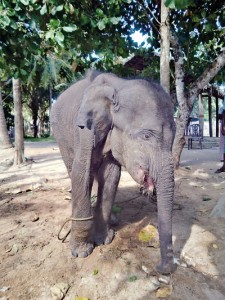
The ‘Workshop on the Policy for the Conservation and Management of Wild Elephants’ was organised by the 123-year old Wildlife & Nature Protection Society of Sri Lanka (WNPS), the third oldest non-governmental organisation of its kind in the world. It seemed the right organisation to do so, having been responsible for the setting up and administration of the first National Parks in the country, Wilpattu and Yala, and also the formation of the DWC. The WNPS is currently headed by President Rukshan Jayewardene. The nitty-gritty of putting the workshop together had been handled by the WNPS’s Human-Elephant Conflict Sub-Committee, the Chair of which is Rohan Wijesinha.
The workshop to discuss the continuing problems inherent in conserving elephants under a scenario of accelerated development, reviewed the draft DWC Policy for the Management of Elephants “in the hope of agreeing on a way forward” where today’s conflicts can make way for a situation of mutually beneficial co-existence between elephants and humans.
The workshop took the form of four expert presentations on ‘Raising awareness amongst stakeholders’ by Dr. Prithiviraj Fernando of the Centre for Conservation and Research (CCR); ‘Role of the DWC in elephant conservation’ by the DWC’s Deputy Director of Research and Training, Dr. Lakshman Pieris; ‘Elephant drives’ by the DWC’s Deputy Director for Elephant Conservation, U.L. Thaufeek and Dr. Fernando; and ‘Strategic fencing’ by L.K.A. Jayasinghe of the CCR.
Each expert presentation was followed by exhaustive panel discussions and hard-hitting question-and-answer sessions.
| Important recommendationsThe recommendations which were decided on at the ‘Workshop on the Policy for the Conservation and Management of Wild Elephants’ organised by the WNPS are:For ‘Raising awareness amongst stakeholders’ – A common communication strategy Heavy cooperation of divisional-level organisations Information among researchers to be made available publicly Community workshops to be carried out at grassroots-level. For ‘Role of the DWC in elephant conservation’ – High-level steering committee for land use and planning development projects in wildlife areas Countrywide land-use plan Mattala and Kahalla Pallekelle should be declared Managed Elephant Ranges (MERs) WNPS to organise similar meetings with development partners to raise funding National Planning Department to have environment and social capacity to evaluate projects For ‘Elephant Drives’ – No permanent elephant drives (the DWC stated that they have already taken this decision – which was commended by everyone) Raise awareness about the long-term consequences and conservation implications of short-term elephant drives No elephants are to be driven out of Protected Areas of the DWC or the Forest Department The Departments of Forestry and Wildlife Conservation to be under one ministry Eco-tourism under the purview of the Department of Forestry should also be encouraged For ‘Strategic Fencing’ – Electric fences should be used to protect villages and agricultural fields, hence be on their boundaries Studies should be conducted on elephants breaching the fences Assess innovative ideas of fencing such as ‘hanging fences’ Draw up strategy on how to make politicians aware of HEC and its proper management
|
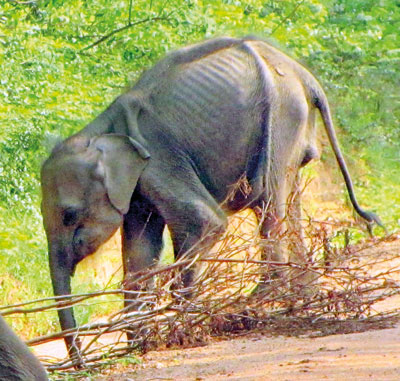
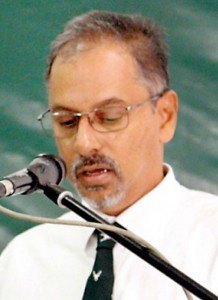
The workshop is launched after a few words from WNPS President Rukshan Jayewardene. (Pix by Ranil Pieris)
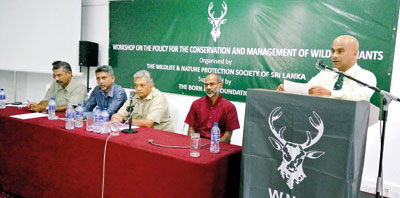
Winding up the workshop: Rohan Wijesinha of the WNPS concludes Tuesday’s session after the final panel discussion with (from left) DWC’s Manjula Amararatne, Rajarata University’s Dr. S. Wijemohan, DWC’s Dammika Pebotuwa, moderator Dr. Sumith Pilapitiya and CCR’s Dr. Prithiviraj Fernando. (Pic by Riahn Pieris)

